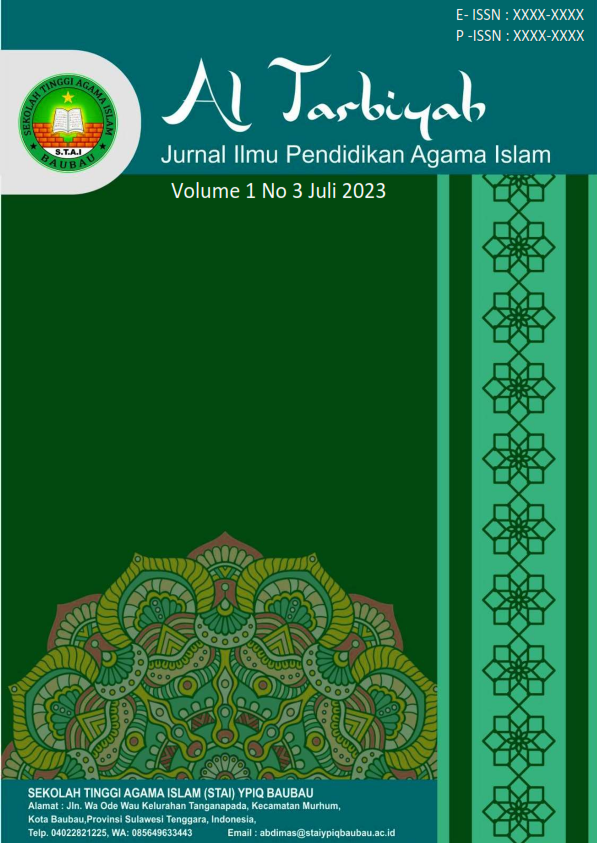Relasi Antara Doa dan Ketenangan Jiwa dalam Perpekstif Psikologi Agama
DOI:
https://doi.org/10.59059/al-tarbiyah.v3i2.2412Keywords:
Mental Health, Prayer, Psychological Peace, Religious Psychology, Spiritual CopingAbstract
This study explores the relationship between prayer and inner peace from the perspective of religious psychology. Prayer is not only seen as a ritualistic act of worship but also as a spiritual coping mechanism that positively impacts psychological well-being. This research employs a literature review method by analyzing various relevant sources. The findings indicate that prayer plays a significant role in reducing stress, strengthening inner resilience, and fostering a sense of peace. A positive correlation is found between prayer frequency and the level of inner calmness, particularly among university students and the elderly. The study suggests that prayer can be utilized as a spiritual approach to support mental health, especially amid the challenges of modern life.
References
Adler, A. (1956). The individual psychology of Alfred Adler: A systematic presentation in selections from his writings. New York, NY: Harper & Row.
Al-Ghazali. (2005). Ihya’ Ulumuddin (Z. Abidin, Trans.). Jakarta, Indonesia: Pustaka Amani.
Burhanuddin. (2020). Zikir dan ketenangan jiwa (solusi Islam mengatasi kegelisahan dan kegalauan jiwa). Jurnal Media Intelektual Muslim dan Bimbingan Rohani, 6(1), 15–25.
Drajat, Z. (1996). Ilmu jiwa agama. Jakarta, Indonesia: Bulan Bintang.
Hawari, D. (1997). Doa dan dzikir sebagai pelengkap terapi medis. Jakarta, Indonesia: PT Dunia Pustaka Jaya.
Koenig, H. G., McCullough, M. E., & Larson, D. B. (2001). Handbook of religion and health. New York, NY: Oxford University Press.
Komalasari, S. (2020). Doa dalam perspektif psikologi: Sebuah kajian empiris. Jurnal Psikologi Islam, 4(2), 110–125.
Kumala, O. D., Kusprayogi, Y., & Nashori, F. (2017). Efektivitas pelatihan dzikir dalam meningkatkan ketenangan jiwa pada lansia penderita hipertensi. PSYMPATHIC: Jurnal Ilmiah Psikologi, 4(1), 37–45.
Maslow, A. H. (1987). Motivation and personality (3rd ed.). New York, NY: Harper & Row.
Mushthofa, A. (2012). Doa dalam al-Qur’an dan psikologi agama. Yogyakarta, Indonesia: LKiS.
Otto, R. (1984). The idea of the holy (M. Ali, Trans.). Yogyakarta, Indonesia: IAIN Sunan Kalijaga Press.
Pargament, K. I. (2007). Spiritually integrated psychotherapy: Understanding and addressing the sacred. New York, NY: Guilford Press.
Rahmawati, S., Sufairok, M. N., Paradila, D., Maharani, A., Fauzima, A. M., Novira, L., Hasana, N. N. C., Fitri, M., Ningsih, Y., Rahmattullah, A. S., Yalsa, M. R., Rania, F., Faizah, F., & Ningsih, F. F. (2022). Dampak doa bagi kesehatan mental pada pemuda Muslim. Proceeding Conference on Da’wah and Communication Studies, 1(1), 1–10.
Rizqi, H. (2022). Ketenangan jiwa dalam perspektif Islam dan psikologi. Jurnal Psikologi Islam dan Kesehatan Mental, 3(1), 45–56.
Rosyadah, D., Fadilah, N., & Nurul, F. (2024). Pengaruh praktik berdoa terhadap ketenangan mental. Jurnal Psikologi Islam dan Spiritual, 2(2), 88–99.
Sarihat. (2021). Rahasia ketenangan jiwa dalam al-Qur’an: Kajian tafsir tematik. MAGHZA: Jurnal Ilmu Al-Qur’an dan Tafsir, 6(1), 65–78.
Sawitri, I. M., Yulia, R., Prayoga, M., Winarti, A., Arvianti, S., Tarina, Z. K., Ramayani, N., Wahyuni, A. R., Rahmawati, D. R. M., Fitriani, V. D. N., Sherly, N., Nabila, E., Oktavia, V., & Mandala, A. (2022). Implementasi doa bagi kesehatan mental manusia. Proceeding Conference on Da’wah and Communication Studies, 1(1), 77–85.
Septia, N. I., Kamal, N., & Ngalimun. (2023). Kesehatan mental dan ketenangan jiwa: Kajian psikologi agama. JIS: Journal Islamic Studies, 1(2), 212–221.
Soemanto, W. (1998). Psikologi pendidikan. Jakarta, Indonesia: Rineka Cipta.
Zulfikri. (2019). Bimbingan agama Islam dalam meningkatkan ketenangan jiwa warga binaan di lembaga permasyarakatan. Jurnal Bimbingan Penyuluhan Islam, 1(1), 1–12.
Downloads
Published
How to Cite
Issue
Section
License
Copyright (c) 2025 Al-Tarbiyah : Jurnal Ilmu Pendidikan Islam

This work is licensed under a Creative Commons Attribution-ShareAlike 4.0 International License.







